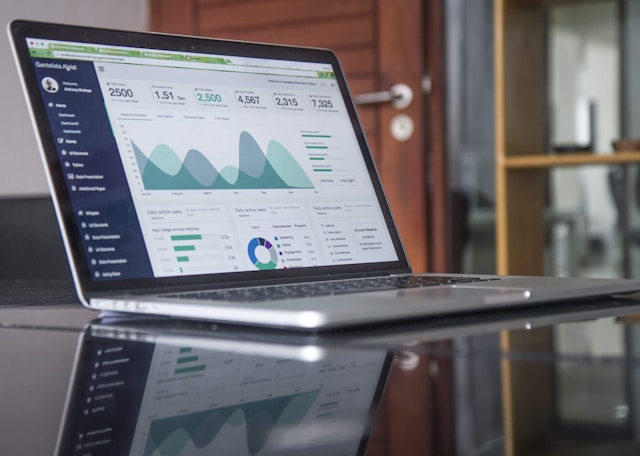Kanban boards have become a widely adopted tool for improving workflow efficiency across various industries. Originating in Lean Manufacturing as a visual system for managing production processes, they have evolved into a versatile method for tracking tasks and projects. Kanban boards offer teams a clear and organized way to visualize their work, prioritize tasks, and streamline processes. This visual approach helps increase transparency, improve communication, and reduce inefficiencies, making it an essential tool for teams looking to optimize their workflow and boost productivity.
As businesses strive for greater efficiency and agility, Kanban boards provide a simple yet powerful framework for managing complex workflows. Whether used in software development, marketing, or operations, the ability to visualize tasks and workflows helps teams stay aligned, monitor progress, and identify bottlenecks. In this article, we will explore how Kanban boards can significantly enhance workflow efficiency by promoting better organization, time management, and continuous improvement, ultimately leading to higher productivity and faster delivery times.
What is a Kanban Board?
A Kanban board is a visual tool used to manage and improve workflows by providing a clear representation of tasks, their progress, and the stages of work. It is typically divided into columns, each representing a different stage of the workflow, such as “To Do,” “In Progress,” and “Completed.” Tasks are represented by cards that move across these columns as work progresses. This visual format allows teams to easily track the status of tasks, identify bottlenecks, and ensure that work is balanced and progressing smoothly.
The Kanban board is rooted in the principles of Lean Manufacturing, which emphasizes efficiency and waste reduction. Originally developed by Toyota to streamline production, the concept of Kanban has since been adapted for a wide range of industries, including software development, marketing, and project management. By making the workflow visible, Kanban boards help teams prioritize tasks, manage workload capacity, and focus on delivering value more effectively. Whether in physical form, on a whiteboard, or digitally through software, Kanban boards are a powerful tool for fostering collaboration, organization, and continuous improvement in any workflow.
Key Features of Kanban Boards
Kanban boards offer several key features that make them effective tools for managing workflows and improving team efficiency. These boards provide a visual representation of tasks, enabling quick assessments of project progress. With the use of Work In Progress (WIP) limits, Kanban helps prevent bottlenecks, ensuring tasks move smoothly through the workflow. Additionally, their flexibility and adaptability make Kanban boards suitable for a wide range of workflows, fostering better communication and coordination among team members.
Key features of Kanban boards:
| Feature | Description |
| Visual Representation | Tasks are represented by cards, which move across columns indicating workflow stages. |
| Work In Progress (WIP) Limits | Limits the number of tasks in any stage to prevent bottlenecks and ensure smooth flow. |
| Flexibility and Adaptability | Can be customized with columns, swimlanes, and labels to meet the specific needs of a team or project. |
| Transparency | Ensures that all team members have a clear view of the work process, promoting better communication and collaboration. |
| Collaboration | Encourages coordination across departments or teams, fostering improved teamwork. |
Steps to Improve of Kanban Boards Workflow Efficiency
Improving the workflow efficiency of Kanban boards requires a strategic approach that focuses on optimizing task flow, reducing bottlenecks, and continuously refining processes. Here are some key steps to improve the efficiency of a Kanban board workflow:
1. Set Clear Work In Progress (WIP) Limits
Implementing Work In Progress (WIP) limits is essential to avoid overloading any stage of the workflow. By limiting the number of tasks that can be in progress at any given time, teams are encouraged to focus on completing tasks before starting new ones. This reduces the chances of bottlenecks and ensures that work flows smoothly across all stages. Review and adjust these limits regularly based on the team’s capacity and project needs.
2. Regularly Review and Analyze Workflow
Frequent reviews and retrospectives are crucial for identifying inefficiencies within the workflow. Analyze the movement of tasks on the Kanban board to spot bottlenecks or stages where tasks tend to pile up. Tracking metrics like cycle time (the time it takes to complete a task) and lead time (the time from task initiation to completion) can provide valuable insights. Use this data to make informed decisions about process adjustments and to continuously improve task flow.
3. Optimize Task Prioritization
Ensure that tasks are clearly prioritized, so the team knows which items are most important. The Kanban board should clearly reflect the priority of tasks, whether through color-coding, labels, or dedicated priority columns. This helps the team stay focused on high-impact tasks and reduces delays caused by misalignment or confusion about what needs to be worked on next.
4. Implement Pull Systems for Task Assignment
Kanban boards function best when teams use a “pull system” rather than pushing tasks onto team members. In this system, tasks are pulled from the board as team members are ready to start them, rather than having tasks assigned to individuals. This approach encourages team members to focus on completing existing work before taking on new tasks, leading to smoother task flow and a more efficient workflow.
5. Use Swimlanes for Better Organization
Swimlanes are horizontal rows that divide the board into sections, allowing for better organization of tasks based on categories, teams, or priorities. For example, you could have separate swimlanes for different types of work (e.g., urgent tasks, customer requests, or internal projects) or different team members. This visual distinction makes it easier to see task progress across different areas and prevents the board from becoming too cluttered.
6. Foster Team Collaboration and Communication
Kanban boards are most effective when they are used as a collaborative tool. Encourage team members to regularly update the board, communicate any issues, and discuss obstacles during daily stand-ups or meetings. This ensures that everyone is aligned, tasks are clearly understood, and any blockers are quickly addressed. Strong collaboration leads to more efficient workflows and timely task completion.
7. Automate Repetitive Tasks
Many Kanban tools, especially digital ones, offer automation features that can reduce manual work and streamline workflows. For instance, you can automate task transitions, notifications, or even generate reports to track progress. Automating repetitive tasks helps teams save time, minimize errors, and focus on high-priority work.
Conclusion
Kanban boards are a powerful tool for enhancing workflow efficiency by providing a visual representation of tasks, streamlining communication, and promoting a continuous improvement mindset. By offering features like Work In Progress (WIP) limits, prioritization of tasks, and the ability to visualize bottlenecks, Kanban boards help teams maintain focus and manage their workflows more effectively. Regular reviews, task prioritization, and collaboration further optimize task flow and ensure that work is completed in a timely and efficient manner. Whether in software development, project management, or any other industry, Kanban boards can drive significant improvements in productivity, reduce waste, and lead to faster delivery times, making them an essential tool for any team seeking to maximize their workflow efficiency.









